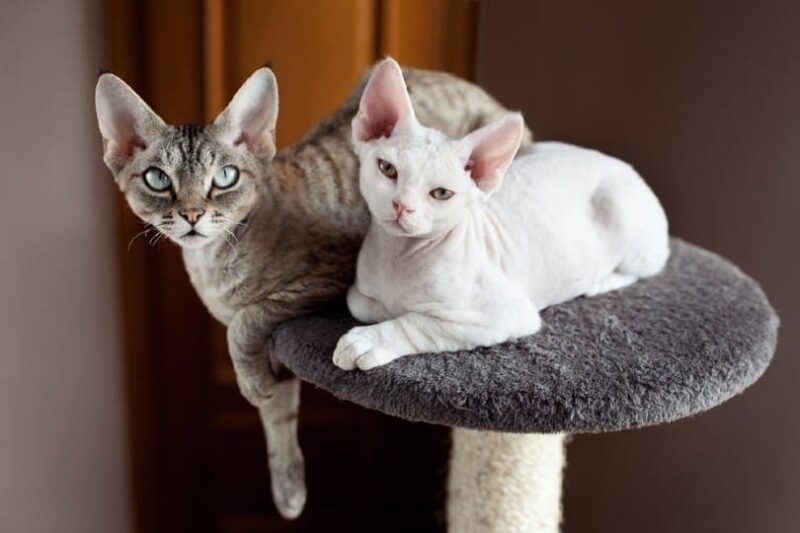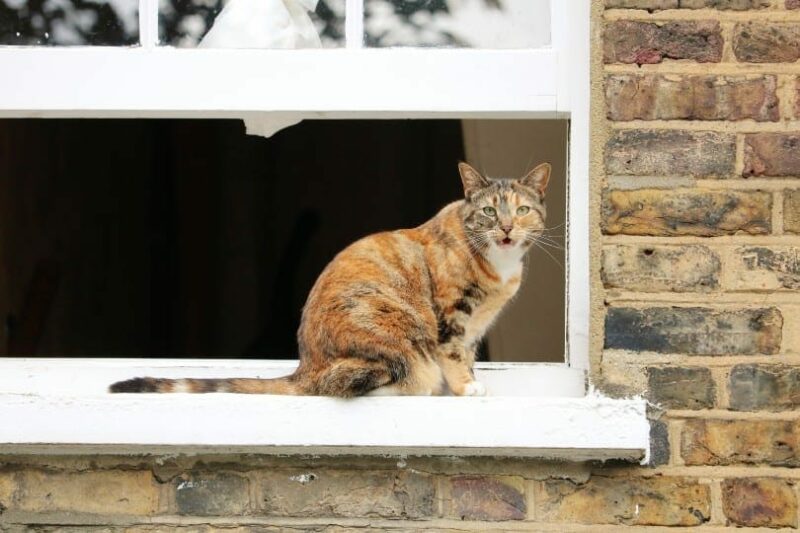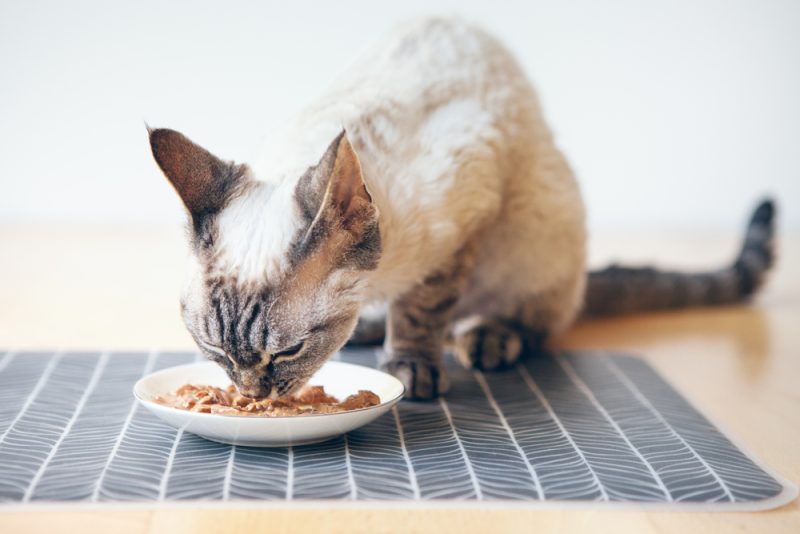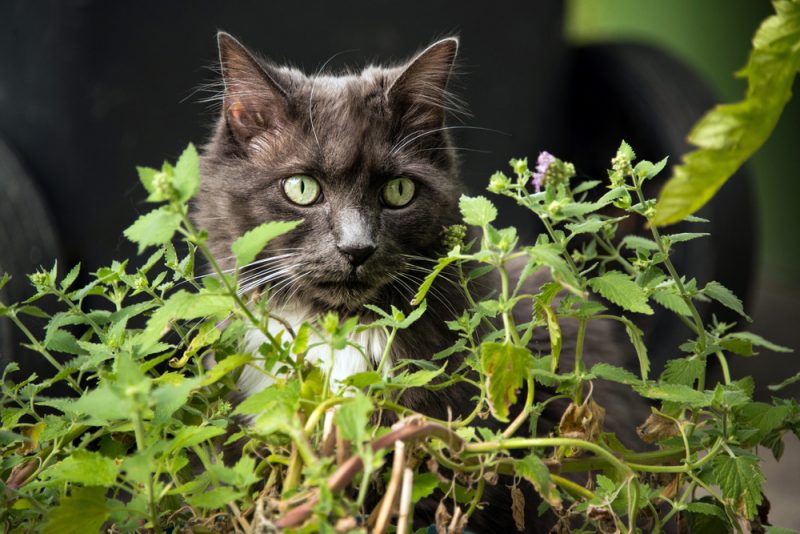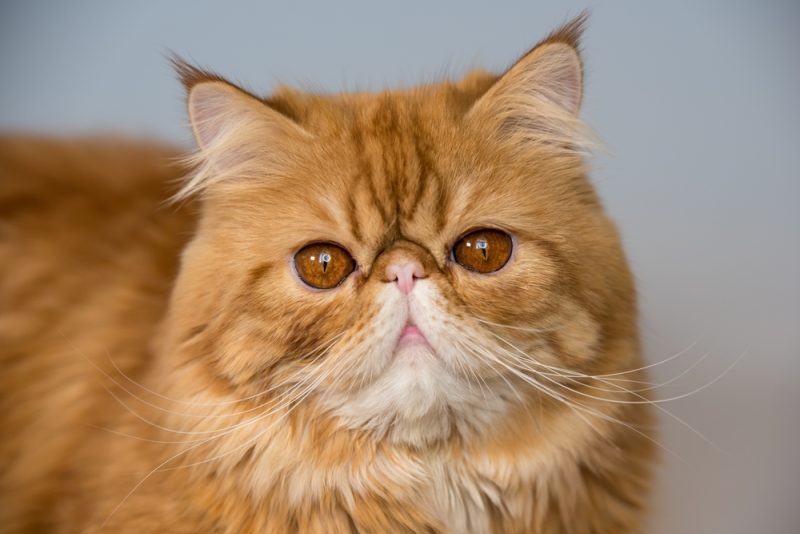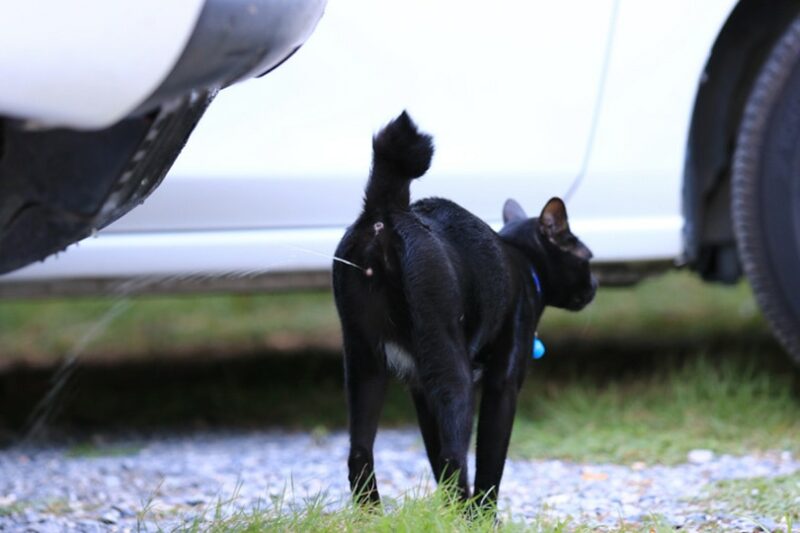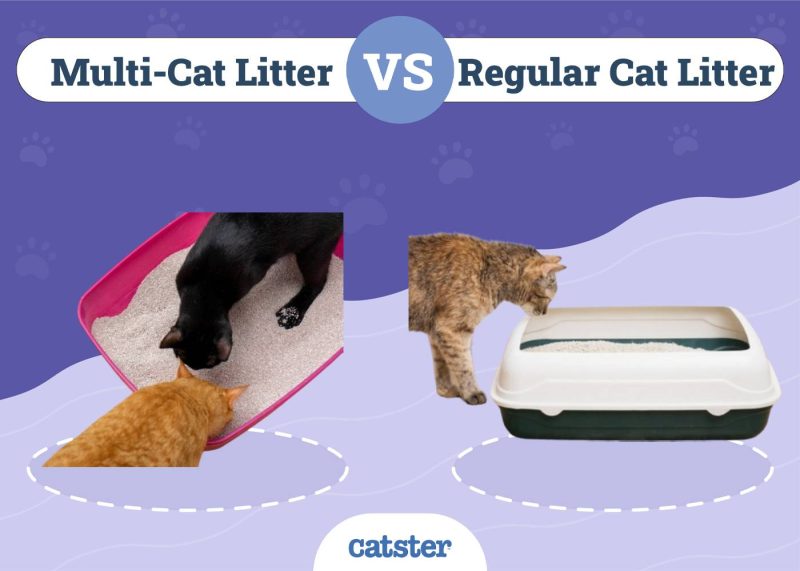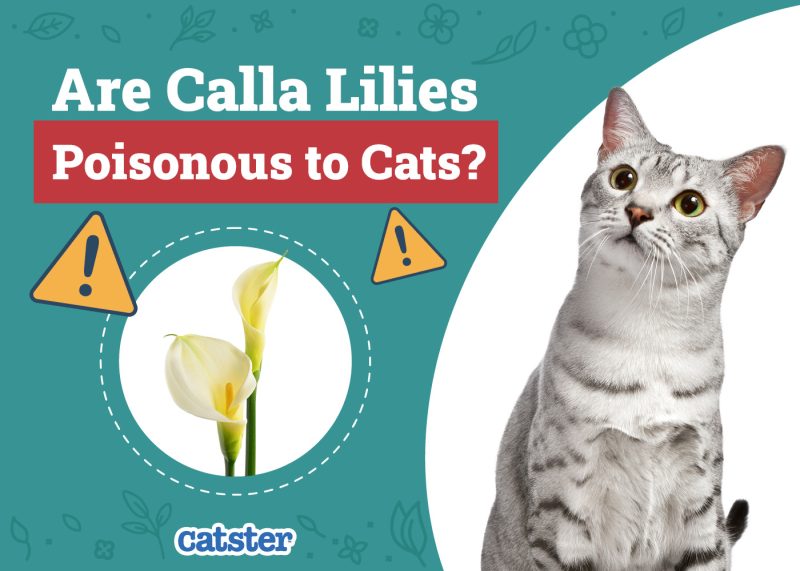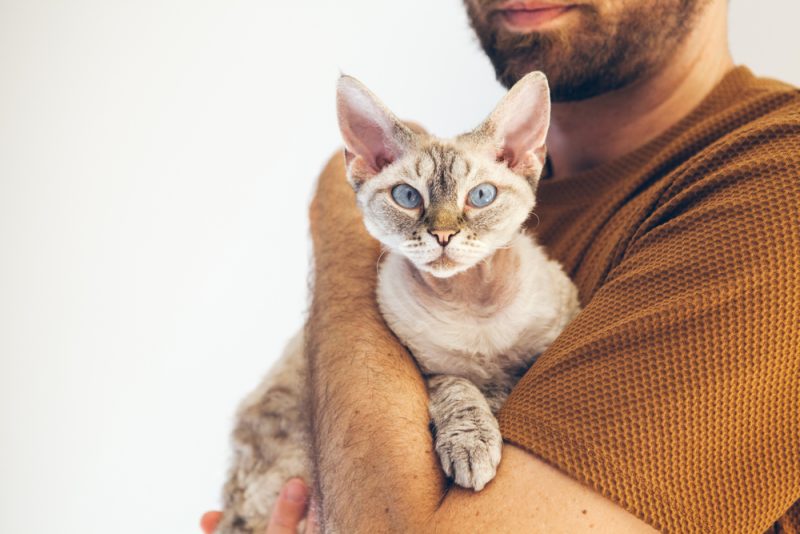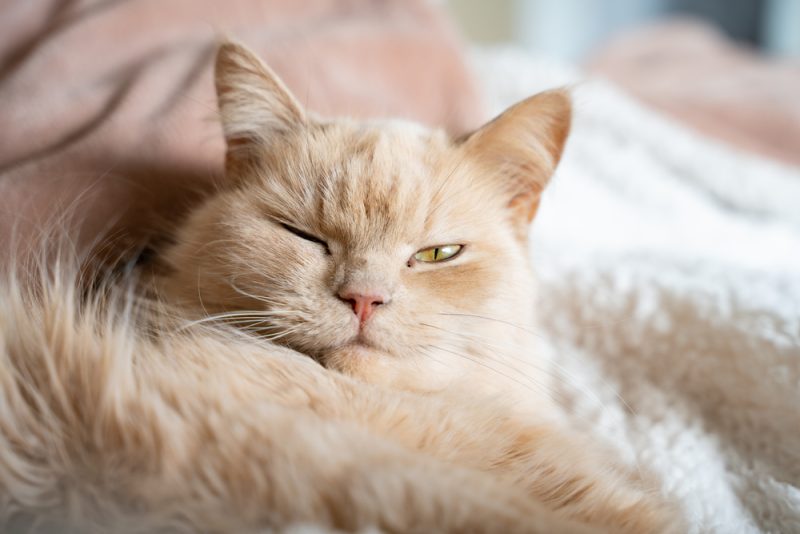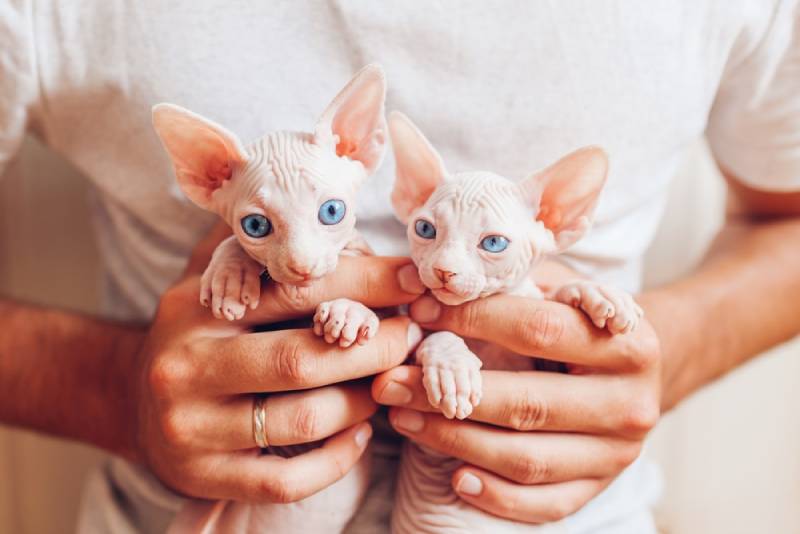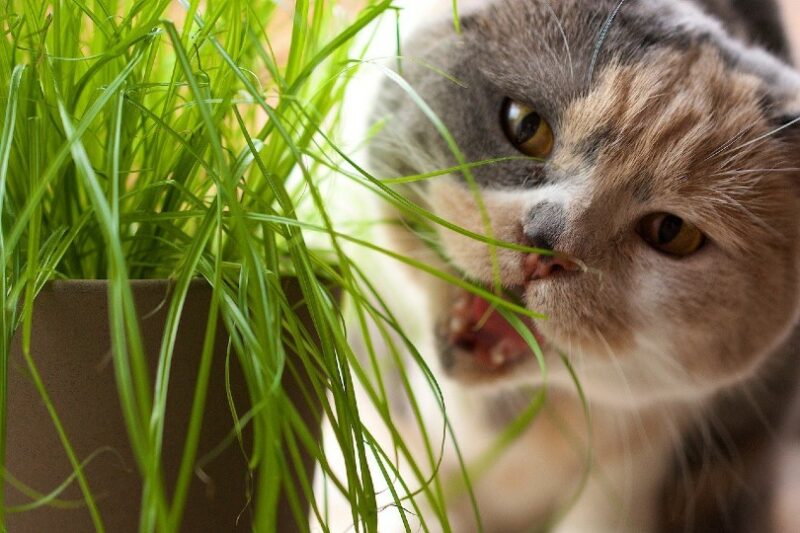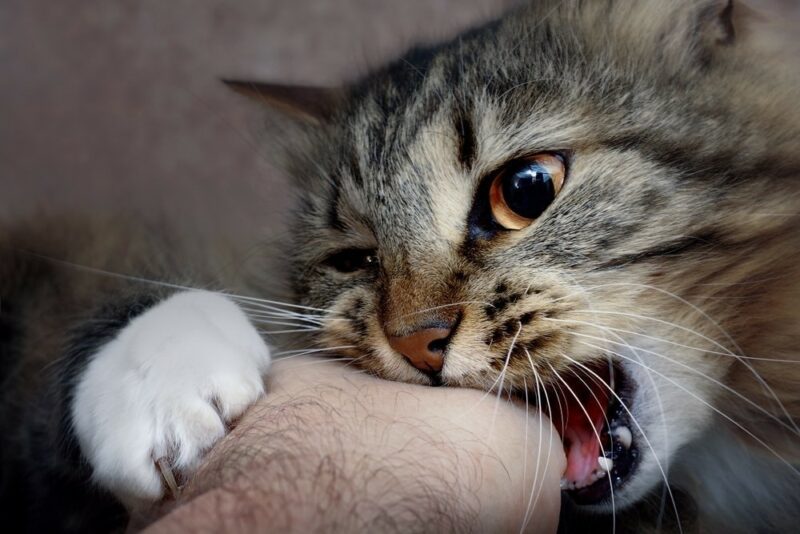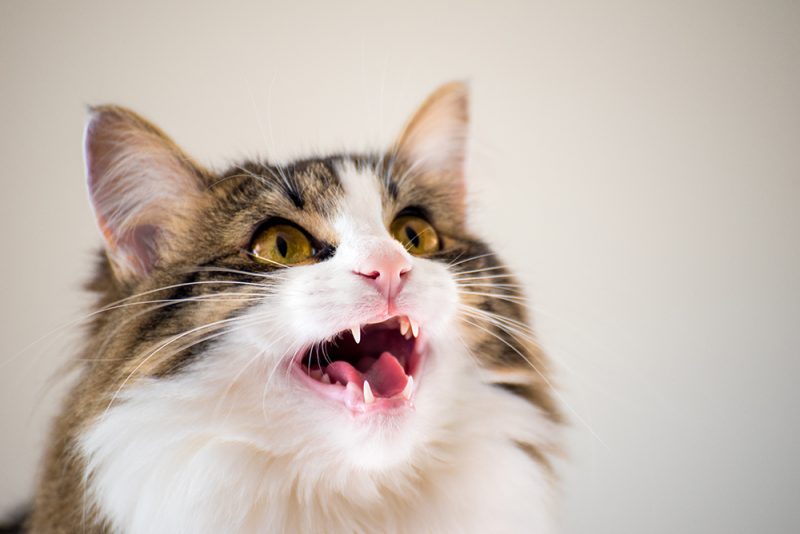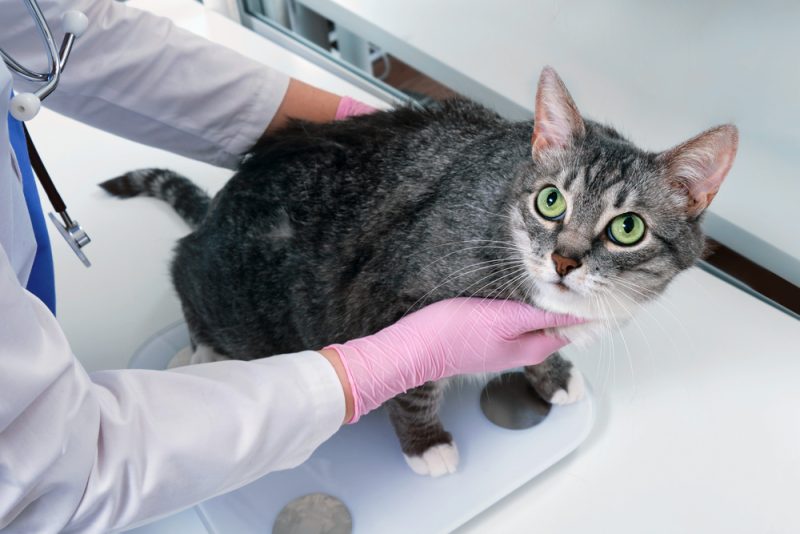The inquisitive and friendly Devon Rex is a cat with an unlimited supply of love and loyalty to share with the right people. These cats are unique in many ways with their distinctive, fairy-tale-like faces, huge, bat-like ears, and short, curly coats that can come in pretty much any color and pattern. This includes white, black, blue, red, cream, and chocolate, to name a few.
Since so many coat colors are possible when it comes to a Devon Rex, we’ve broken them down into categories based on different coat patterns, like solid, shaded, tabby, etc. Let’s get started.

The 11 Devon Rex Colors and Patterns
1. Solid
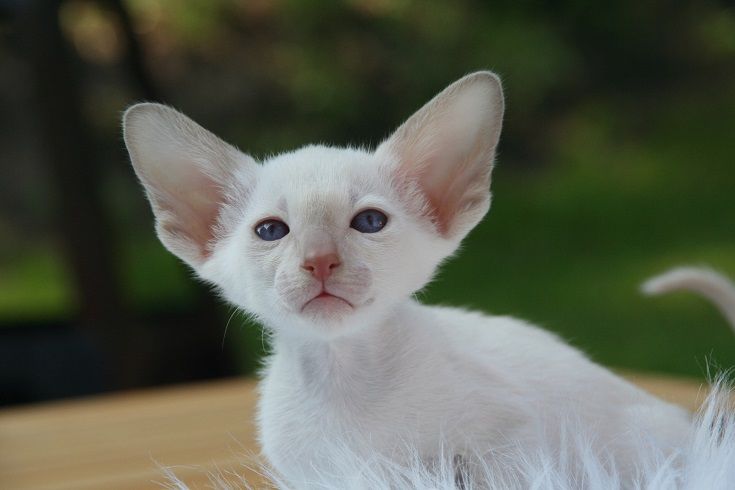
A solid coat is what it sounds like—the cat has just one color on their coat. You can find Devon Rexes with solid coats in the following colors:
- White
- Blue
- Black
- Chocolate
- Cream
- Red
- Lavender (a sort of dusty grey color)
- Cinnamon (a brownish shade)
- Fawn
2. Shaded
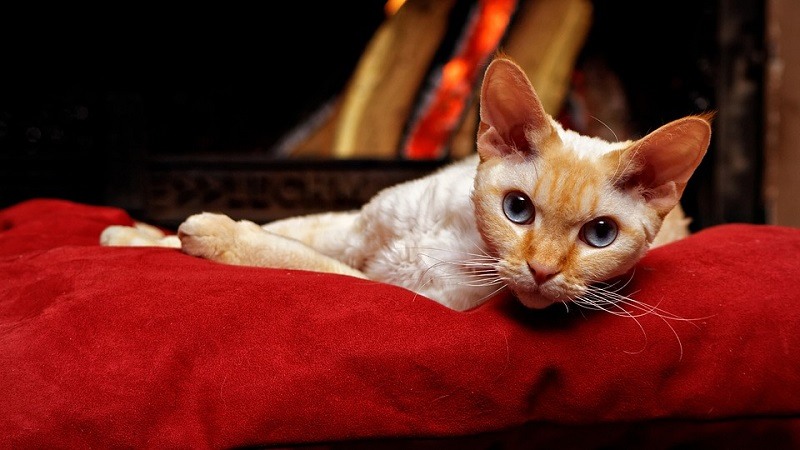
Shaded is a type of coat pattern, and cats that have it display shading on the face, tail, and sides of the body ranging from dark (ridge) to white (chin, stomach, chest, and the area under the tail). Shaded cats also have a white undercoat and the leg color should match the face color. Note that Devon Rexes with the tortoiseshell pattern display mottling on the nose and paw pads.
Shaded pattern coats come in these colors:
- Shaded silver
- Blue shaded
- Chocolate shaded
- Lavender shaded
- Cameo shaded (also known as red shaded)
- Cinnamon shaded
- Tortoiseshell shaded
- Blue-cream shaded
- Chocolate tortoiseshell shaded
- Cinnamon tortoiseshell shaded
- Lavender-cream shaded
- Fawn-cream shaded
3. Chinchilla
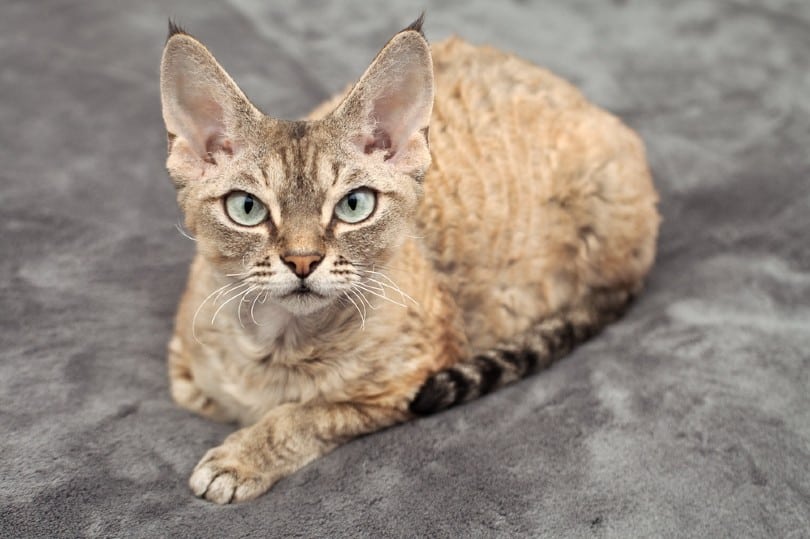
Cats with a chinchilla coat pattern have white undercoats and tipping on the back, tail, head, and flanks. The tipping can come in various colors, including blue, red, cream, and more. You may also spot tipping on the legs. The stomach, chest, and chin are pure white.
4. Smoke
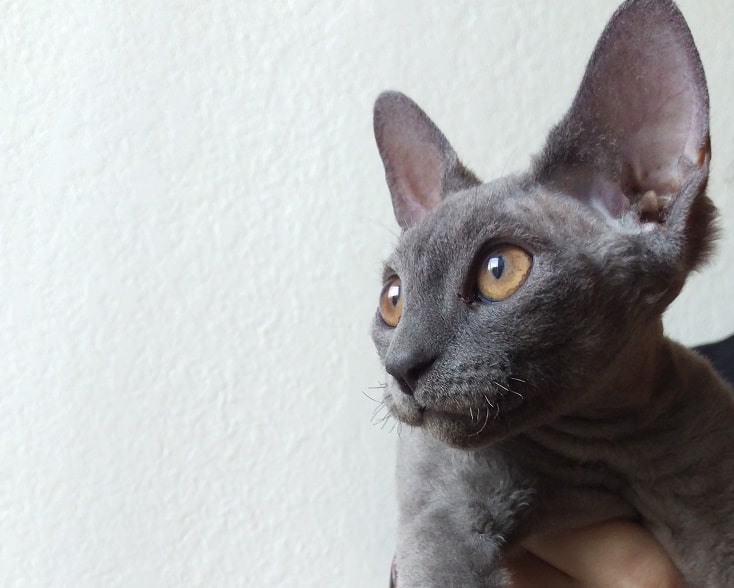
Smoke-patterned cats have a white undercoat that displays deep tipping with another color. When the cat is moving, the undercoat is easily seen, but when the cat is resting, it looks like they have only the marking color (i.e. blue, black, etc.). Like other coat types, smoke can be combined with various colors, which are:
- Black smoke
- Blue smoke
- Red smoke cameo
- Chocolate smoke
- Cinnamon smoke
- Lavender smoke
- Fawn smoke
- Cream smoke
- Tortoiseshell smoke
- Chocolate tortoiseshell smoke
- Fawn-cream smoke
5. Tabby
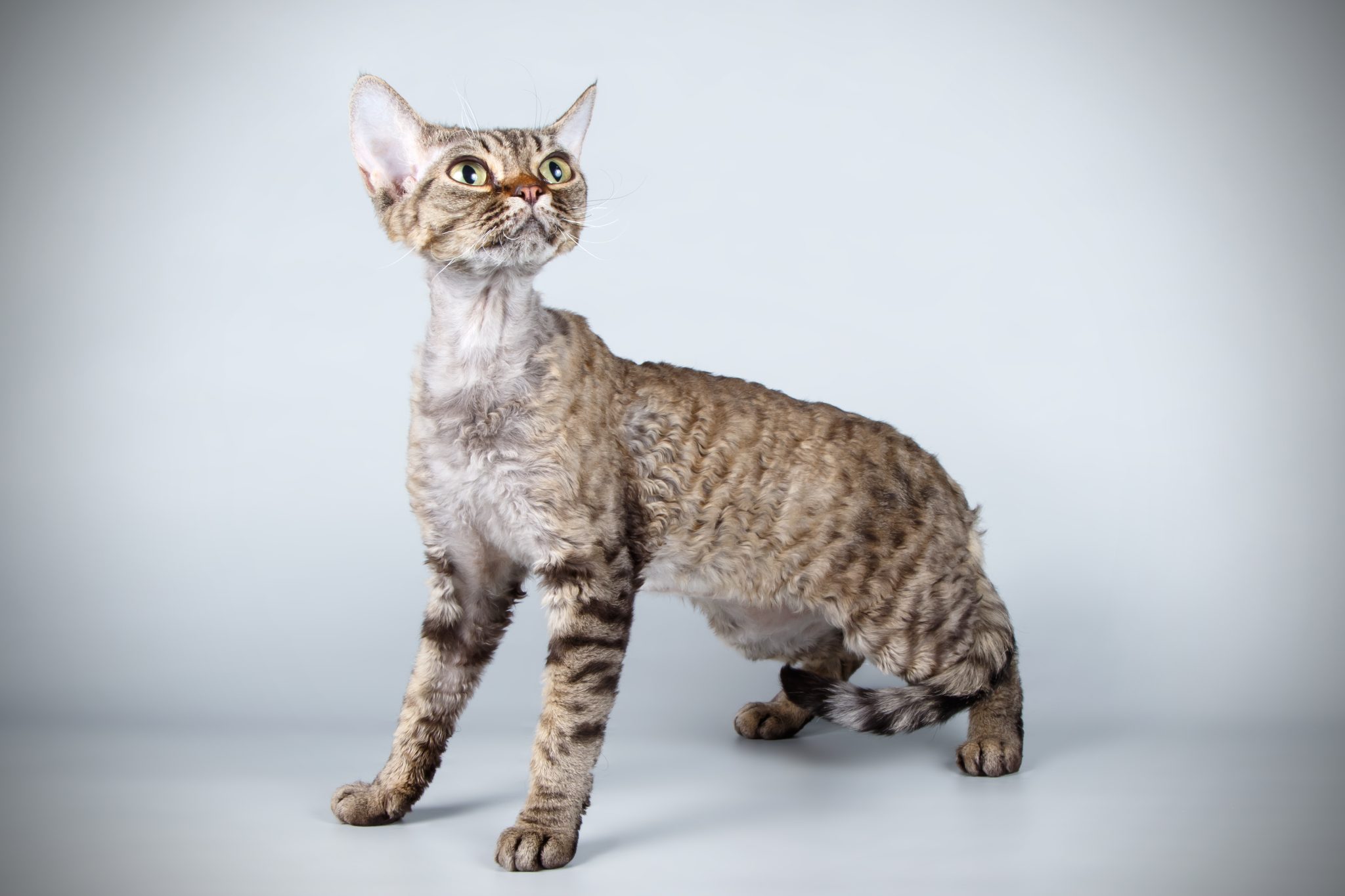
Tabby cats are distinguished by their stripey coat patterns that can also display dots and swirls. On the forehead, this pattern appears as a sort of “M” shape. “Tabby” is actually an umbrella term for several other tabby-combination coat patterns, which are:
- Classic tabby: Swirling on the flanks and sides that gives off a marbled effect.
- Mackerel tabby: Perpendicular striping on the spine that gives off a tiger-like effect.
- Spotted tabby: Spotted markings that can be oblong, round, or rosette-shaped.
- Ticked tabby: Lighter around the roots with darker ticking on the ends.
- Patched tabby (chocolate, cinnamon, silver, brown, lavender, fawn, or blue with red or cream patches)
- Silver tabby
- Blue tabby
- Brown tabby
- Cream tabby
- Red tabby
- Chocolate (chestnut) tabby
- Chocolate silver tabby
- Cinnamon tabby
- Cinnamon silver tabby
- Lavender tabby
- Lavender silver tabby
- Fawn tabby
- Cameo tabby
- Blue silver tabby
- Cream silver tabby
- Fawn silver tabby
6. Tortoiseshell
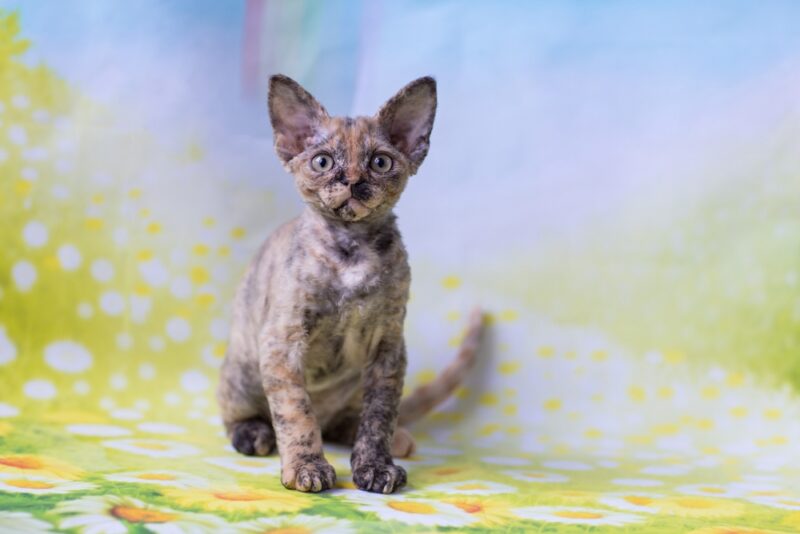
Tortoiseshell Devon Rexes have bi-colored coats that display black mottling or patches in various red shades. The mottled effect changes depending on the coat color. For example, a blue-cream tortoiseshell Devon Rex would display blue mottling or cream patches. Here are the possible tortoiseshell combinations:
- Blue-cream tortoiseshell
- Chocolate (chestnut) tortoiseshell
- Lavender-cream tortoiseshell
- Fawn-cream
7. Calico
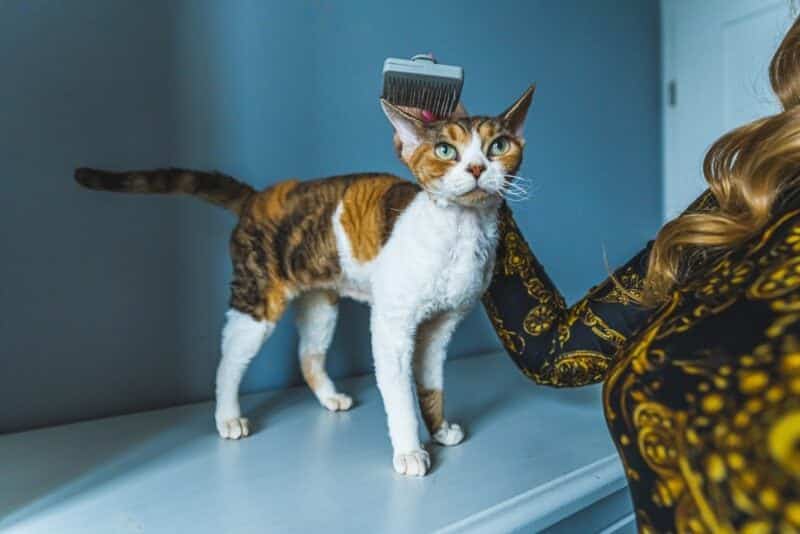
The calico coat pattern is sometimes mistaken for a tortoiseshell pattern, but the difference is that calico cats have three colors, whereas tortoiseshells have two. Calico cats have a white base, mostly underneath, and black and red patching. Like tabbies, calicos come in various types:
- Van calico: Black and red patches only on the head, tail, and legs.
- Dilute calico: Blue and cream patches instead of black and red.
- Dilute van calico: Blue and cream patches only on the head, tail, and legs.
- Fawn calico
- Lavender calico
- Chocolate calico
- Cinnamon calico
- Fawn van calico
- Lavender van calico
- Chocolate van calico
- Cinnamon van calico
8. Bi-Color
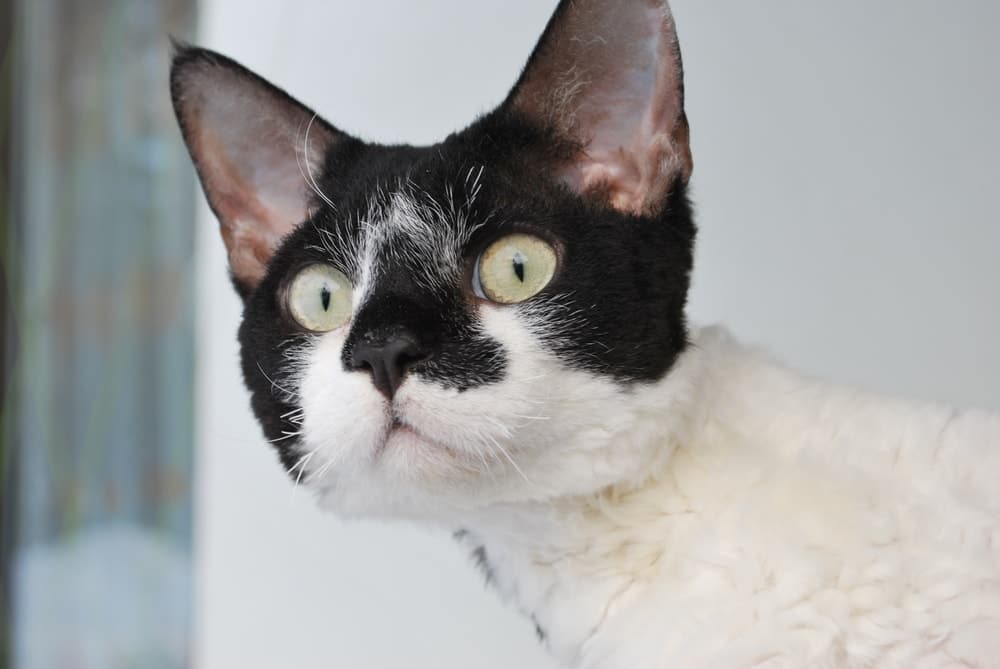
Bi-color Devon Rexes have a solid coat color like black, but white is also present. The distribution of white is approximately the same as the distribution of the other color. You can also get bi-color Devon Rexes that have a coat pattern like tabby or tortoiseshell with white. Van bi-color, which describes a coat with color (i.e. black, red, etc.) only on the head, tail, and legs is also possible.
9. Pointed
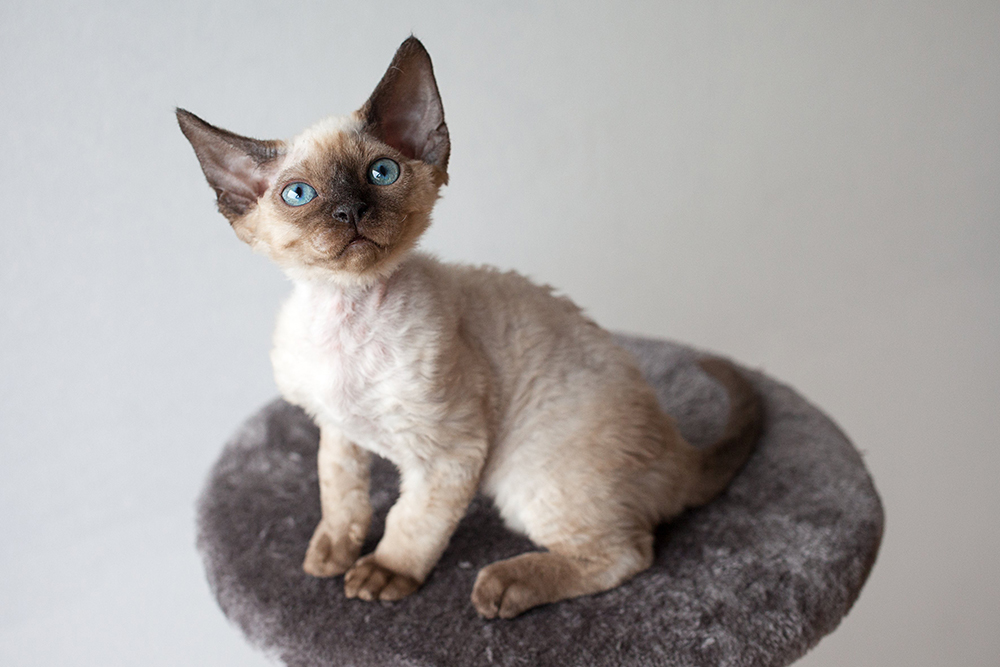
If your Devon Rex has a light body color, like cream, with a darker color (any other color or pattern with the exception of mink) on the ears, mask, tail, feet, and legs, they are likely pointed. Siamese cats, Ragdolls, and Colorpoint Shorthairs also have pointed coats.
10. Mink
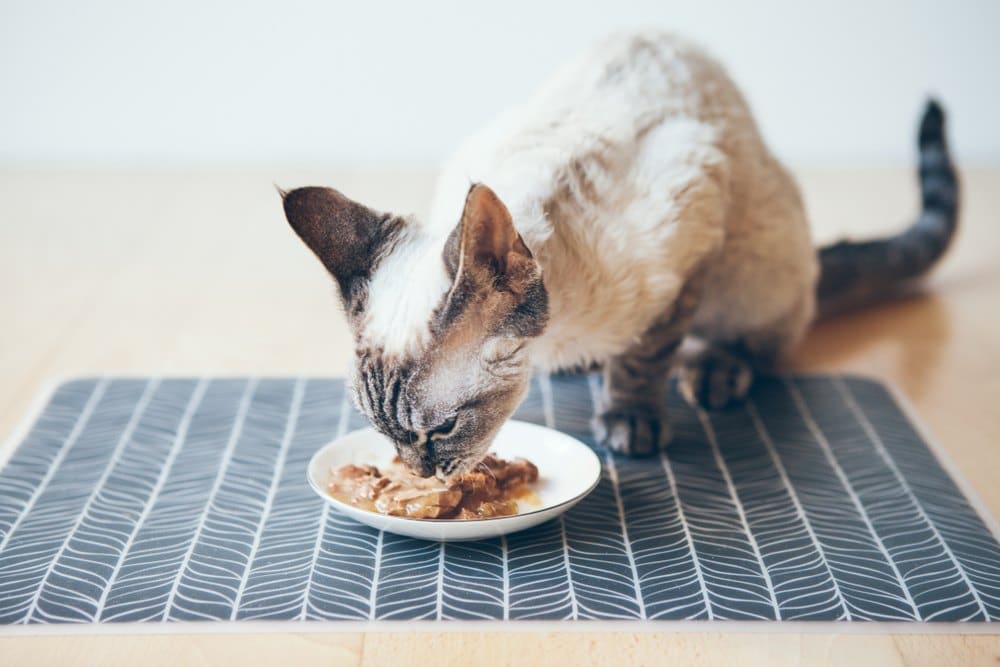
A mink Devon Rex is a bit of a mixed bag. They’re pointed as described above; though, in younger cats, the contrast between the points and the rest of the body can range from hardly noticeable to obvious. Older cats’ coats will display less contrast between the points and body.
The body is also colored, giving off a warmer or richer effect than you may see in a standard pointed cat. Mink Devon Rexes can come in any color or pattern except for sepia and pointed.
11. Sepia
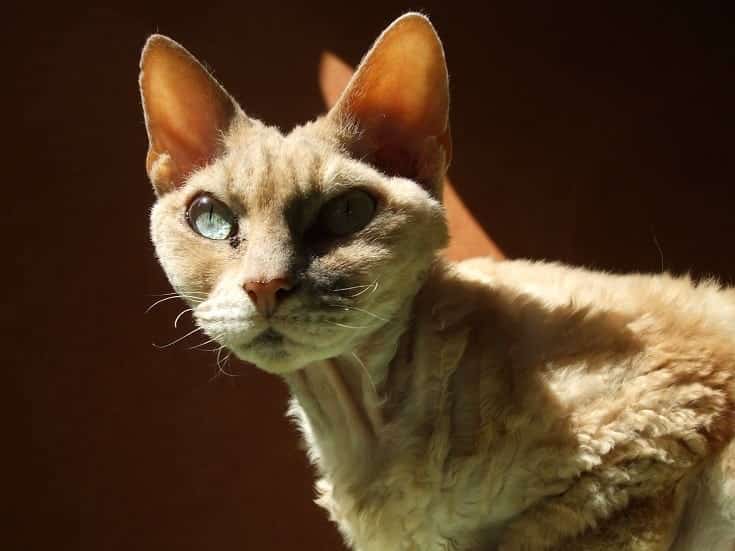
Sepia is a sort of earthy-brown or reddish color. While sepia-patterned kittens are quite light in tone, older cats display a more well-defined coat color with a bit of lighter shading on the underparts. Sepia cats can present with any other coat color or pattern except for mink or pointed.

Conclusion
As we can see, the world of Devon Rex coat color patterns is pretty much limitless! This diversity is part of what makes this breed so special and interesting (among many other wonderful traits), but it can make figuring out exactly what kind of coat your Devon Rex has really tricky.
We hope this guide has helped you identify the kind of Devon Rex you have on your hands. If you’re still unsure, ask your vet at the next checkup, as they may be able to shed some light on the situation.
Featured Image Credit: Veera, Shutterstock
